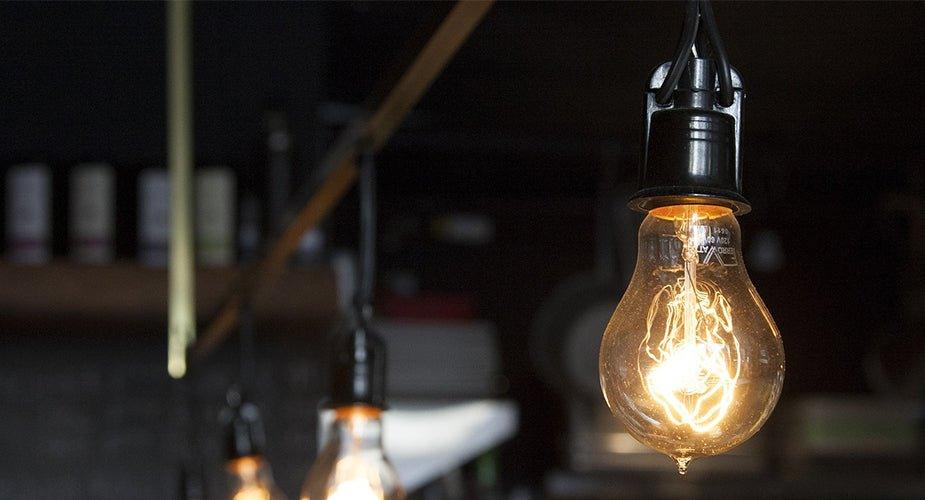Did you know that appliances that are constantly plugged in such as TVs, computers, and microwaves, are constantly consuming electricity even if they are turned off?
According to Lawrence Berkeley National Laboratory, a research and development center under the US Department of Energy, up to 10% of residential power consumption is coming from phantom load.

What is Phantom Load?
Phantom load, also known as standby power or energy vampire, is the electricity consumed by an electronic device while it is turned off or in standby mode. This power is used to keep the device's memory, clock, and other functions running so that it can start up quickly when you turn it on again.
Phantom loads can occur in a variety of appliances at home and even in business establishments. Below are examples of types of devices that consume standby power.
- Remote-controlled electronic and electrical devices that are in standby mode such as air-conditioners, televisions, and sound systems.
- Electronic and electrical devices that can carry out some functions even when switched off such as microwaves with electrically powered timer.
- Computers that are being used via remote access since they are always on standby mode.
- Devices that have an “instant-on” feature that responds right away to user action without warm-up delay.
- Transformers for voltage conversion.
- Motion sensors, light sensors, built-in-timers, and automatic sprinklers.
The amount of power consumed by a phantom load can vary depending on the electronic device. For example, a television might consume a few watts of power in standby mode, while a computer might consume several hundred watts.

The Hidden Cost of Phantom Loads
Did you know that Americans pay approximately $19 billion dollars every year all because of phantom loads from their devices and appliances? This is a fact according to the report presented by the National Resources Defense Council (NRDC).
If you translate that amount to kWh, that would be a total of 1,375 billion kWh of electricity consumed by US homes annually and if we talk about its environmental impact, we are getting nearly 1 billion tons of carbon dioxide emissions. The numbers are so massive and we are just talking about the United States alone. Just think about the figures that will come up if we are to consider the entire planet’s phantom load consumption - *jaw drops*.
What we need to understand and remember is that this always-on energy provides very little to no effect at all to the consumer because most of these plugged devices and appliances are not performing their primary functions anyway and the users are not actively using them.
If every household in the country would make the effort to reduce their phantom load for devices that they do not actively use, billions of dollars worth of electricity bills would be saved not to mention lowered carbon dioxide emissions from power stations will help our planet breathe a little better.
Banish the Phantom Loads Using These Tips and Tricks
Now that we know that phantom loads are usually unnecessary and just cost us money, here are some things that you can do to help rid of or at least lessen idle loads in your homes.
- The easiest and most effective way to prevent phantom loads is to unplug appliances when you are not using them. Unplugging any appliance from the wall will ensure that it is not using any power, even in standby mode.
- Use power strips with built-in switches. This allows you to turn off multiple devices all at once. When you are not using the devices, simply flip the switch on the power strip to turn them off.
- Consider using appliances that have Energy Star labels. Energy Star appliances are designed to use less energy, including standby power compared to non-Energy Star products. Dryers, air-conditioners, dishwashers, and refrigerators are some examples of Energy Star Energy Efficient products available in the market. When buying new appliances, make sure to look for those with the Energy Star label.
- Use smart power strips. Smart power strips can be programmed to turn off devices at certain times, such as when you go to bed or when you leave the house. This can help you reduce phantom loads even further.
- Using clean, renewable, and sustainable backup sources of energy such as solar power can help mitigate the effects of phantom loads, especially in situations where the device or appliance needs to be plugged in 24/7 even when it is not being used.
By following these tips, you can save money on your electricity bill and at the same time, contribute to the efforts of reducing the environmental impact of consumption.
Keep These in Mind About Phantom Loads
- They can be difficult to detect because they are so small. You may not notice a difference in your electricity bill if you only have a few phantom loads. However, if you have a lot of phantom loads, they can add up over time.
- They can add up over time, so even a small phantom load can have a significant impact on your electricity bill. For example, a television that consumes 5 watts of power in standby mode can cost you about $1 per year. If you have 10 televisions in your home, that's an additional $10 per year. Not a lot but if you have several appliances consuming phantom loads, $10 can easily become $100 so small things do add up.
- There is no one-size-fits-all solution to preventing phantom loads. The best approach will vary depending on your specific circumstances. If you have a lot of phantom loads, you may want to consider using a smart power strip or unplugging appliances when you're not using them.
Final Thoughts
Phantom load is still energy consumed no matter the amount. Phantom loads from one household may not seem that much but if you think about all the households in the entire world that have at least one active energy vampire at home, you may just find hairs at the back of your neck standing once you realize the sheer amount of wasted electricity and wasted money. As the planet continues to experience climate change, conserving energy has become a crucial part of preventing this phenomenon from getting worse. So go ahead and make sure to unplug all the devices and appliances in your home when they are not in use.
* We want to give credit where credit is due. Professional writer, Ann Matthew, contributed research and content to this blog titled: Phantom Load Thank you, Ann, for your contributions!






 10,000W LIFEPO4
10,000W LIFEPO4









